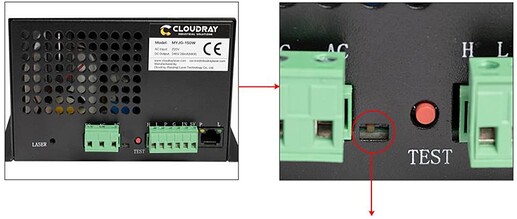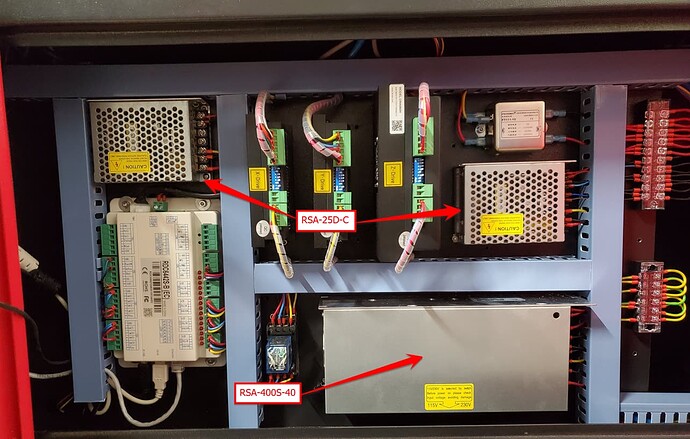I came to the conclusion that my PS is very similar if not identical to the Cloudray version. In the Cloudray documentation I found the following interesting and a little confusing.
These pics are identical to my unit
.
I am not sure what the Laser hole (High Voltage Output) is for. I cannot see anything inside like a pot or anything. I assume that I will be able to use the test button to adjust the current instead of having to get up and fire the laser from the controller?
The first two bullet points are interesting to me. I am not real sure exactly what it is telling me. My PS the switch it mentions is to the left. And the LCD on my PS does not appear to have a trimmer potentiometer on it. BUT I do have an LCD screen (see image below) above my controller panel that has a Min/Max dial on it. I am curious if this dial is used to adjust the current? I have turned the dial and it does not appear to do anything but I wonder if that is because I need to move the switch on the PS to the right to make this adjustment?

So does this make sense to you guys? With this information, what is my best course of action? Should I just adjust the pot on the side or is this info providing a different solution?




